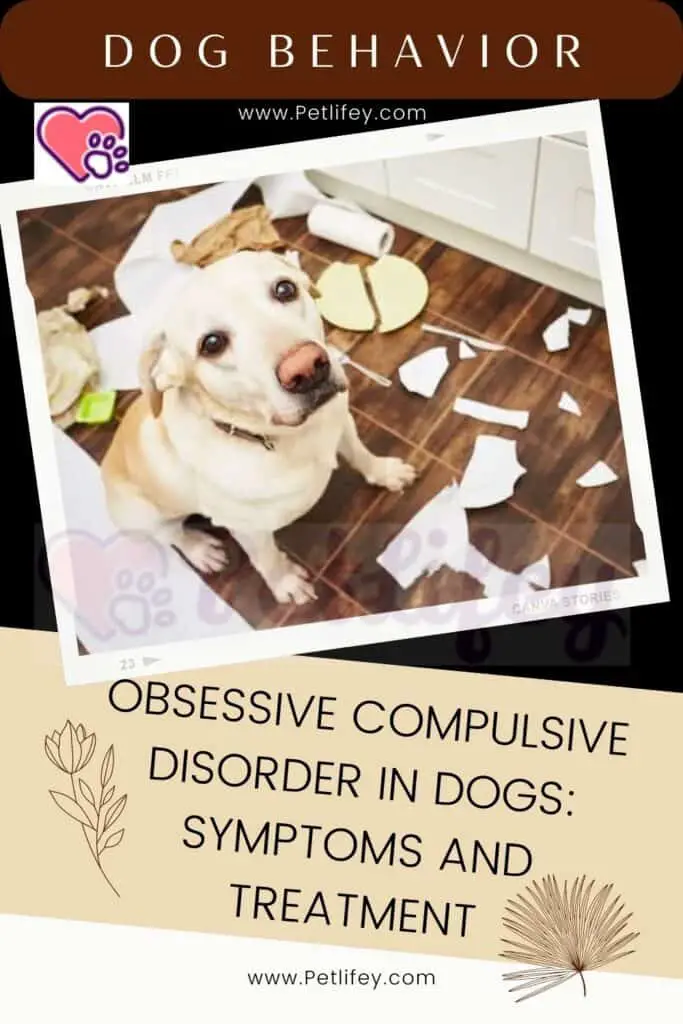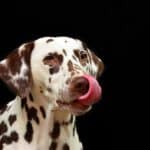
Did you know that dogs can also suffer from obsessive-compulsive disorders? In this article we tell you all about this pathology.
Obsessive Compulsive Disorder in Dogs or OCD is an anxiety-derived condition characterized by intrusive, recurring and persistent thoughts that produce fear and apprehension. In humans, there are many types of OCD, generally focusing on repetitive activities and patterns (repetitive disorders, computers, and accumulators among others).
Dogs can also suffer from this type of behavioral disorder. In this article we show you how to identify and what are the possible remedies to cure obsessive-compulsive disorder.
How do you know if your dog has OCD?
In most cases, since the animal cannot speak or perform excessively complex functions, this disorder is identified with the obsessive repetition of certain behaviors, when they are not repeated, they are normal:
- Bark at other dogs, people and other animals.
- Scratches against surfaces in an exaggerated way.
- Dig for no reason.
- It licks more than normal.
- It chases its own tail.
- Chew furniture and household items.
- Go hunting for imaginary flies.
Obsessive Compulsive Disorder is closely related to the concept of stereotype. This is defined as behavior that is repeated over time without a clear purpose. The stereotypes are not always indicative of obsessive compulsive disorder, as may occur in stressful situations or carelessness and disappear over time once the problem was solved.
1. Turn or chase your tail
The bull terrier breed, and in particular the English bull terriers, have a certain propensity towards this condition. Although, of course, they are not the only breeds that suffer from this disorder.
Recent research has shown that tail chasing, particularly in bull terriers, could be a form of autism. A study conducted in 2011 by Moon-Fanelli determined that the compulsion to chase the tail is more common in males. The study eventually concluded that it appears to be associated with trance behaviors and episodic aggression.
These findings, coupled with repetitive tail chasing behavior and a tendency to phobias, led experts to conclude that tail chasing could represent a canine form of autism.
However, it should be noted that these conclusions are not definitive. The same study also indicated that this syndrome in dogs could be related to a genetic condition called fragile X syndrome.
Better to be cautious about diagnosing canine autism
It’s important to note that there are several other canine conditions that are difficult to diagnose, such as anxiety and pain disorders. These conditions can cause clinical signs similar to those associated with autism.
Therefore, in all exceptional cases, such as the bull terriers mentioned above, the best veterinarians and owners can do for now is to say that a dog “may have autism”.
In order for a dog to be provisionally diagnosed with autism, it must exhibit atypical repetitive behaviors and some degree of impairment of social interaction with other dogs or people. Additionally, a veterinarian must first rule out other conditions that could be responsible for the clinical manifestations observed.
2. Protection of objects, a clear obsessive-compulsive disorder
Object protection is the behavior that dogs exhibit when they cling to an object and no longer want to let go. The resource could be a toy, food, or any other type of object and even the owner.
This behavior manifests itself in a number of ways, and often owners are unaware that their dog is exhibiting it until it becomes more noticeable.
Defense sometimes involves aggression. Both may look quite similar, but if a dog is afraid, they may try to retreat. The dog can use active aggression if the withdrawal was unsuccessful.
Genetics can be a trigger in behaviors such as protecting objects. For example, this behavior is very frequently observed in Cocker Spaniels.
3. Licking paws
This behavior could start with an initial organic problem such as an injury or allergy. However, it could develop into real psychological problems like anxiety.
Constantly licking your paws causes the release of endorphins in the brain, which creates a feeling of well-being. Therefore, the dog repeats the behavior to get their endorphin.
Boredom, stress, inactivity, and allergies can trigger an episode of obsessive-compulsive disorder. The important thing is to try to find out what the trigger is and then try to eliminate the cause to treat the behavior.
4. Obsession with light and shadow
This is a classic obsessive-compulsive disorder and is usually caused by one of several external stimuli. The most common are master-created. Often, it can start accidentally when a person turns on a light and causes a moving light or shadow.
The dog reacts and begins to follow the movement of the light. The owner finds it funny and repeats it over and over again. In this way, the dog began to follow the path of light and shadow, giving rise to an obsessive-compulsive disorder. Other situations can stimulate the dog to do this.
This disorder is often seen in dogs that are left alone for long periods. Curtains or blinds flutter causing the light to move, the dog finds it interesting and starts chasing it.
Again, endorphins are produced. The breed that suffers the most is the border collie. Other herding dogs may also succumb to this stimulation of light or shade.
Although obsessive-compulsive disorder does not always occur due to classic separation anxiety, it can be stimulated by long absences. Experts believe it could also be related to the onset of dementia or Alzheimer’s.
There are treatments for this behavior, but a complete cure or solution isn’t always possible. In these cases, serotonin treatment is used quite frequently. Even so-called “noise aversion therapy” has been used to break the circle created by obsessive-compulsive disorder.
However, in the case of this disorder, stereotypies usually appear early in the dog’s life and, far from disappearing, intensify over time. In general, these behaviors can become self-destructive, even causing self-inflicted physical harm:
- Lick dermatitis, which ends up causing an epidermal lesion.
- Bleeding from the foot pads, caused by persistently digging and scratching surfaces.
- Loss of hair, due to continuous licking and a prolonged state of anxiety.
- Various injuries and injuries.
In these cases, it doesn’t matter how domesticated the dog is, because after all, dogs are still living things that respond to their own survival instincts. So, if you observe any of these behaviors, you need to go to a vet immediately, as it is clear that something is wrong.
Is OCD recognized as a canine condition?
Yes, dogs can exhibit numerous obsessive or bullying behaviors. The most common are turning around, chasing the tail, chasing shadows and lights, licking walls, protecting objects, sucking on toys or blankets.
Other observed obsessive-compulsive behaviors are hallucinations (for example bites of imaginary flies), desire to eat non-food substances such as earth, stones or feces, move with rhythm, fixed gaze and strange noises. Some dogs also show some aggression.
Causes of Obsessive Compulsive Disorder in Dogs
Dogs that are predisposed to anxiety or have a disease that changes or worsens their senses are more prone to obsessive-compulsive disorders. Hence, there is a clear physiological component of this condition.
However, it is clear that previous experiences and external factors will also be decisive. A history of repeated violence, neglect, confinement in confined spaces and many other factors related to abuse are closely related to this type of disorder in dogs.
Therefore, these types of pathologies, as well as stereotypes, are common in pets rescued from violent environments. This is why, before adopting a dog with a troubled past, it is necessary to be aware of the complications that a similar condition entails, both for the animal and for the owner.
We are not advising against giving a second chance to these poor mistreated dogs, as they are the ones who deserve it the most, but it is better that the owners have some experience in canine education but also time and patience to deal with the disease together.
Treatment

The help of a professional in the field of ethology and canine psychology is essential in dealing with a broad spectrum disorder such as OCD. For this, prolonged sessions aimed at modifying negative behaviors will be necessary. Keep in mind that the “re-education” of the animal is a slow process that requires patience.
Depending on the severity of the behaviors or the trauma, the administration of a drug prescribed by the veterinarian may also be necessary, which in some cases must be given for life. There are specific anxiolytics and antidepressants for dogs.
Obsessive Compulsive Disorder is a difficult pathology to identify and deal with, but with patience, understanding and the right professional support it can be overcome, allowing the dog to live the happy life it deserves.






